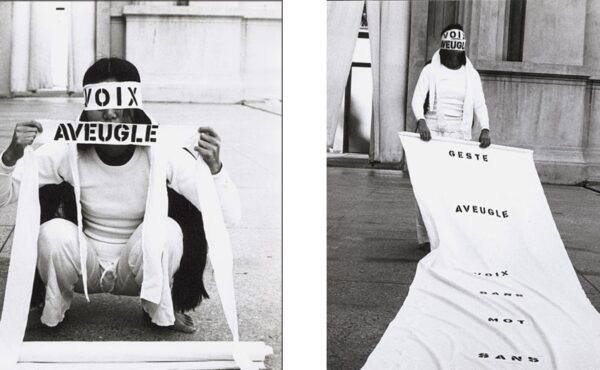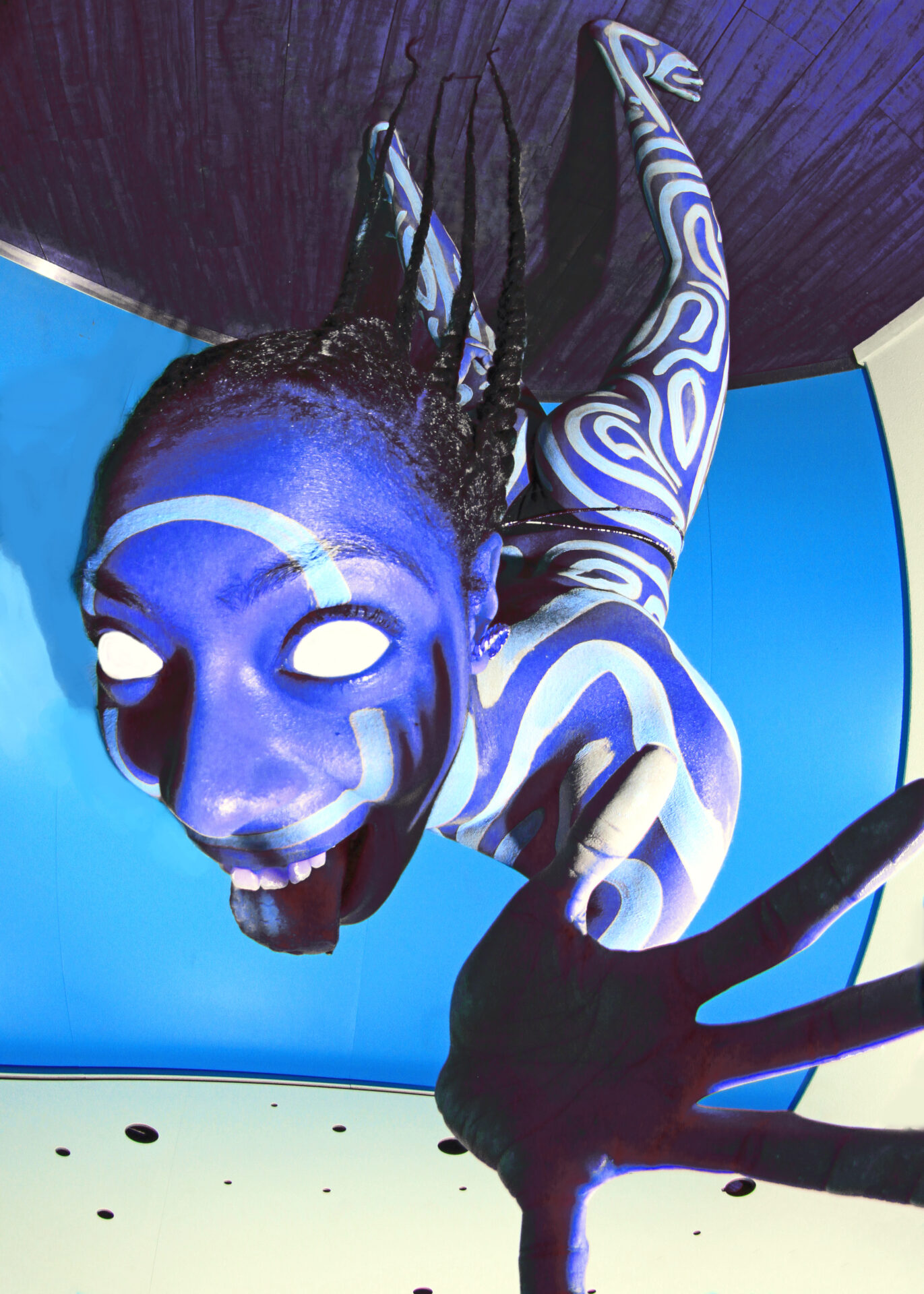
‘We Have Arrived’: talking to AiRich about her solo debute at Stedelijk Museum Schiedam
Olivia Brown speaks to the artist AiRich (pronounced eye-rich) about her recently opened solo exhibition AiRich.Afrofuturistic Visions at the Stedelijk Museum Schiedam. They talk about her artistic origins, her process of making photographs painterly, and how she will never have too few images.
Even through the Zoom call, it was clear that a buzzing AiRich was still coming down from her post-opening high. She explains that she’s trying to preserve her memories of the evening by giving each a place in her body. The Amsterdam-based artist exudes an infectious joy while recounting that her whole community came out to support her, one that has grown along with her career as a maker. ‘Yeah, ten years in the game!’ she jokes. I am curious where the project of AiRich began, ready to understand where the afrofuturistic artist finds her identity. She answers in short, ‘I’ve been an artist as long as I know myself.’ She leans back and explains that she comes from a large family of creatives. AiRich says, ‘I always knew I was gonna be an artist. I just didn’t know how yet.’
At the Mediacollege Amsterdam, AiRich studied Audio/Visual Design and Animation, hoping to become a film director, but had to stop. ‘To keep it all the way one hundred,’ she says, ‘The process for me was a bit too much. I knew I was able to handle it, but it was too [physically hard on the body].’ She put the film camera down and picked up a digital camera, instead. She had already been drawn to photography, which she says she ‘practiced more for [herself], not necessarily for the world,’ eventually leading to that elusive a-ha moment: discovering her own style. Those around her enthusiastically agreed that she’d found herself. But make no mistake; while it might be automatic to label her medium as photography, through creative editing and a focused eye, AiRich has established an a process that blends varying art practices and steps outside of traditional photography.
Thema's

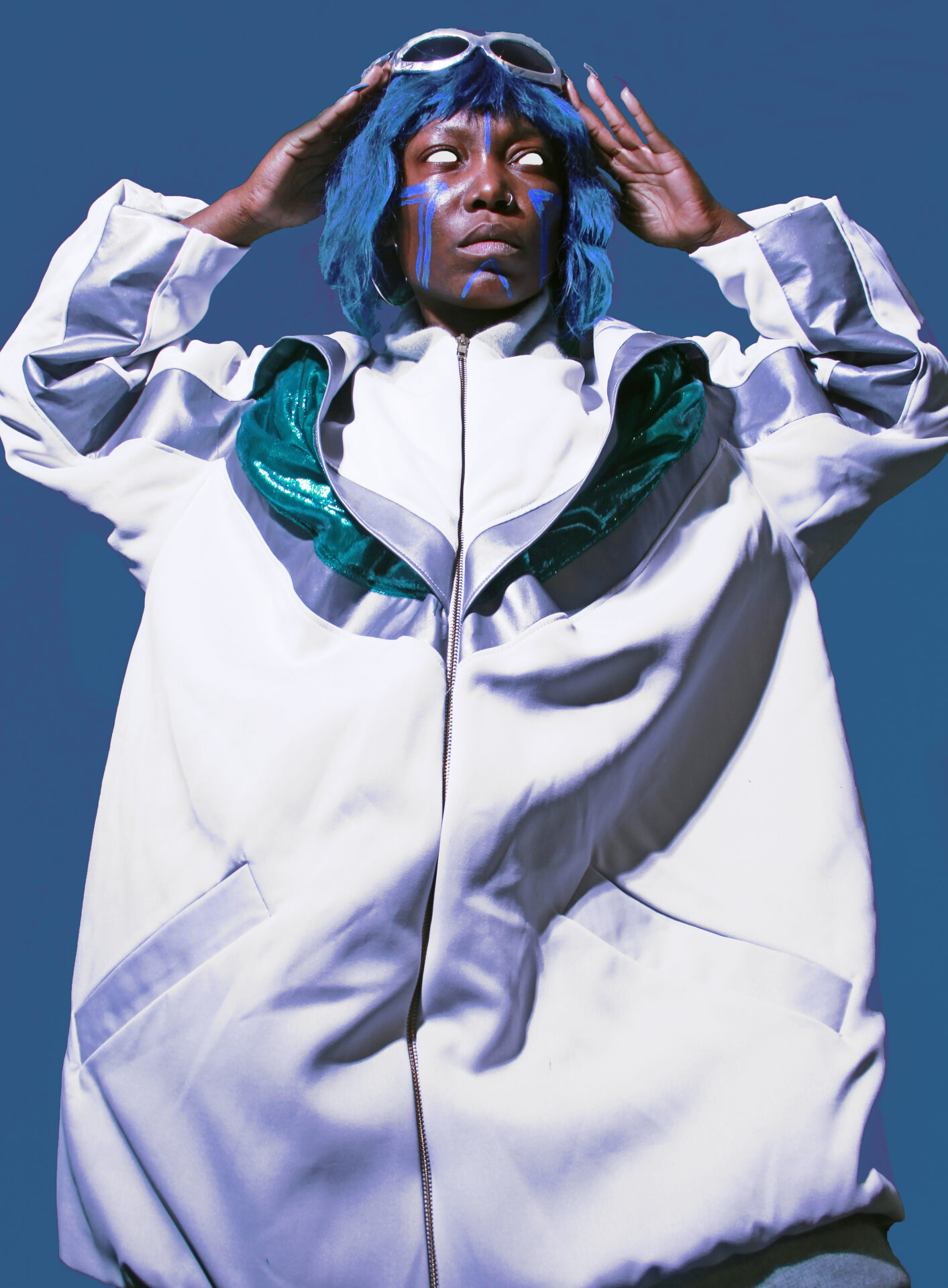
AiRich states that her output is a form of naked, natural self-expression. Of course, most artists would likely agree with this statement, but I was struck by how much reverence she has for the single, still image, believing the age-old saying of its worth in words. It is not surprising that AiRich gets so much out of images when you consider what she puts in them. How does an image come together? ‘It’s layered,’ she begins, ‘It’s a lot of pre-production, a lot of production, but also a lot of post-production.’ You produce the sh*t out of it? ‘I’m gonna word it another way.’ That’s probably for the best. ‘Whew, it’s always a journey.’ She describes coming up with the concept. When she has a vision, it’s locked in. She controls the styling, aesthetics, and mood. But don’t misinterpret control for severity, the photoshoots are intense, but always fun. Members of her family are usually around, music is playing, and laughter is expected in abundance. And the photoshoots are wells of production. ‘I’m the type that tends to shoot way too many pictures that I need to, even if I need one picture, I will probably shoot 4,000 pictures,’ she says. ‘We worked so hard to get to this day, now we’re here, now I want it from each angle.’
When the shoot is wrapped and the photos are in, AiRich will stare at them for days, working out what she’ll do with them. It’s her stance that while she uses the medium of photography, this step is what separates her from your standard photographer. She explains, ‘The shoot feels like it’s fifty percent, because in the editing I translate so much.’ The image becomes another work entirely, transforming so completely that people mistake them for paintings rather than photos. AiRich describes that she respects her fellow photographer, but that her process takes a left turn from the others. For example, she and another photographer can both use a fish eye, but her suspicion is that she’ll experiment with a different outcome in mind. ‘Not better, just different,’ she stresses. It’s why she considers herself more of a visual artist and less a photographer, despite what the info card at the exhibition may say.
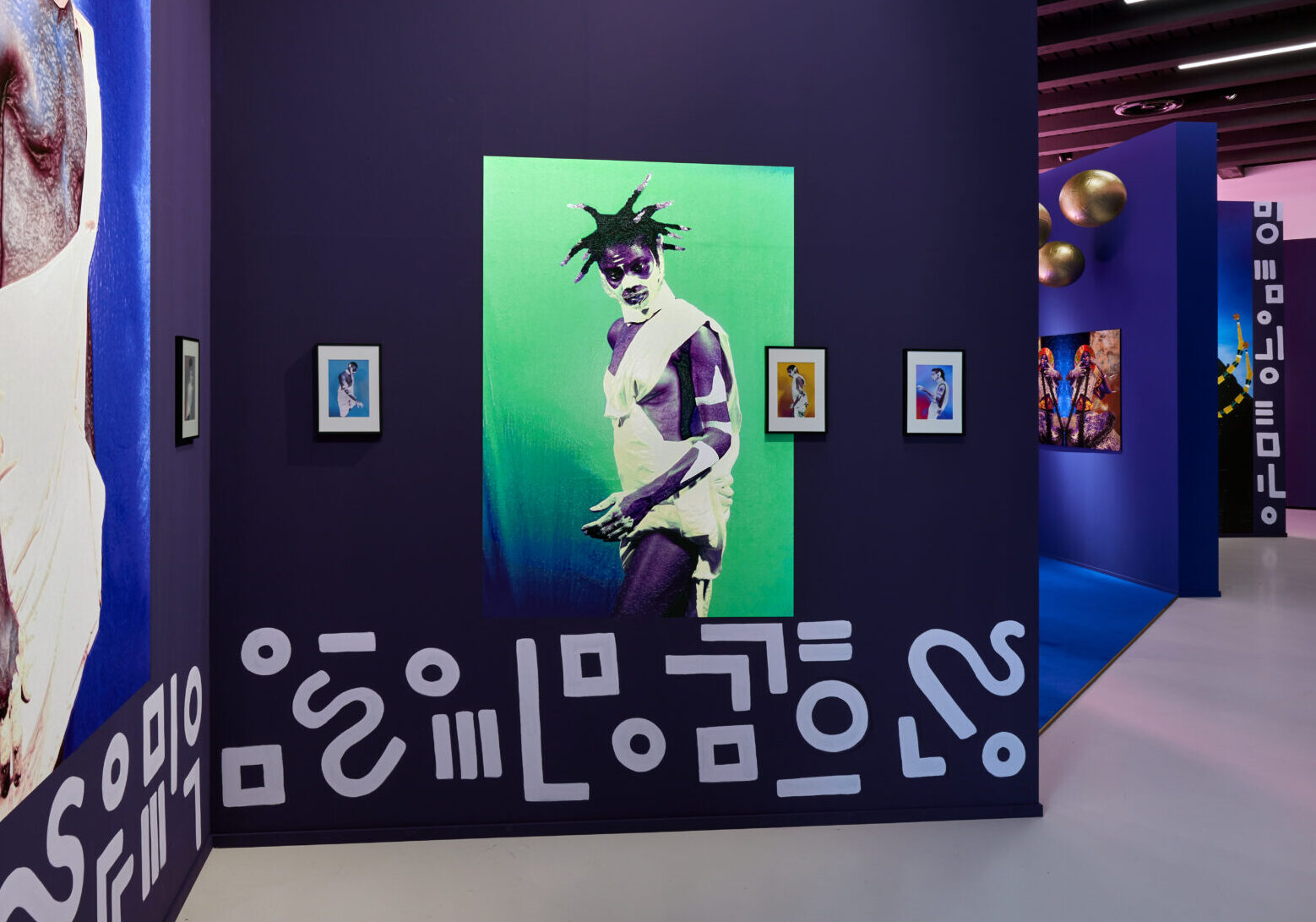
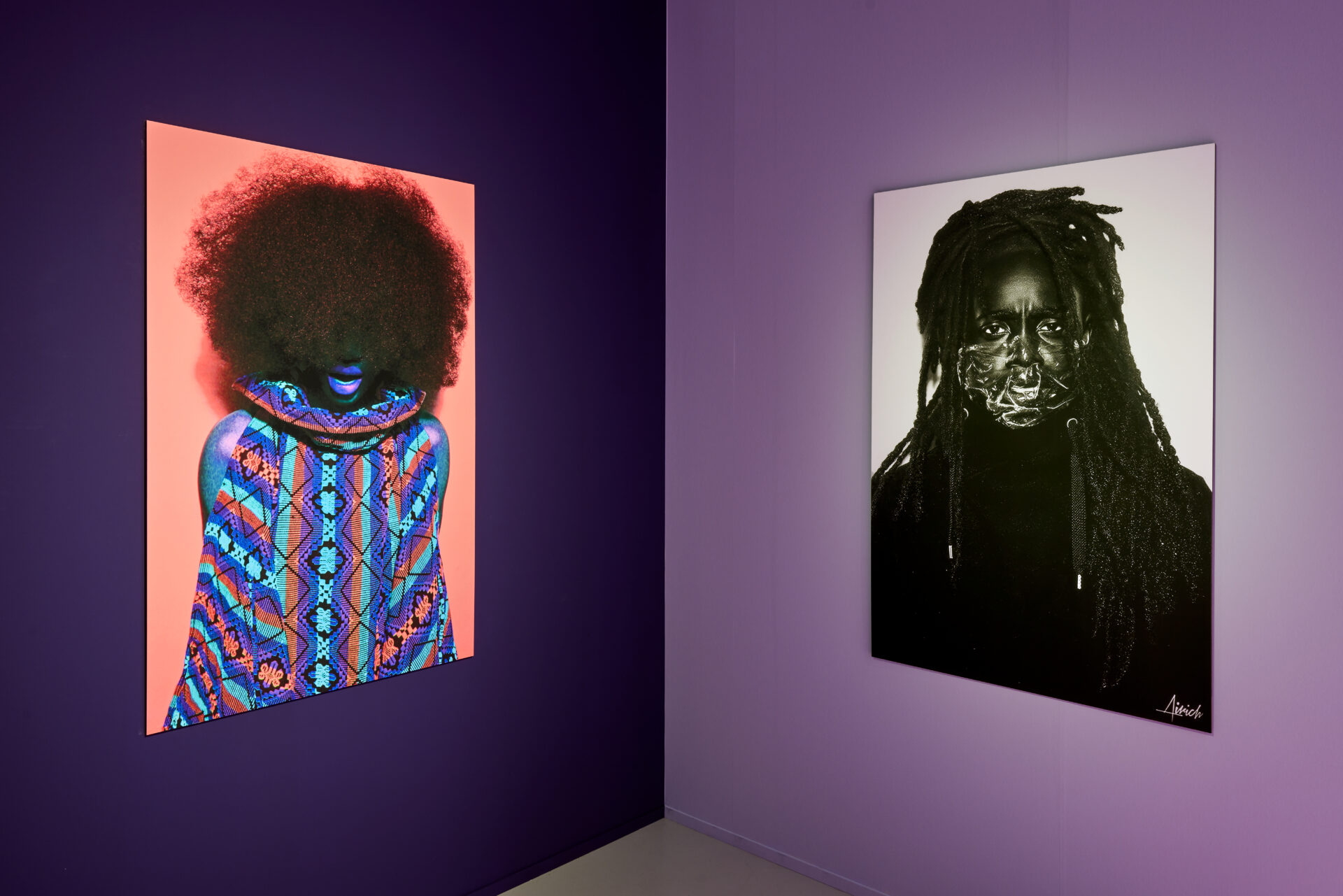
Paying Tribute to a Decade of Growth
The exhibition, comprised of three rooms and works from projects dating from 2013 until 2024, represents a sizable chunk of her artistic output of the last decade, encompassing the growth that has taken place in that time. The exhibition features works from all major projects that have kept the artist busy. There are blown-up prints of her photography, culminating into one room containing a massive collage, composed of many hundreds of photos taken during her shoots. There are imagined interstellar ancestors conjured by AiRich in 2015, portraits made in 2017 as a tribute to Grace Jones’ far-reaching influence, self portraits collages from 2021 made in collaboration with artist Dogon Krigga. Some photographs feature models with body paint, which AiRich designs and applies herself.
We talk about a new work, Den Doro (translating to ‘We Have Arrived’), finished earlier this year. I assume at this point that the work is especially important to the artist, not only because it is her most recent, but also because of the enthusiasm with which she shares her research. Den Doro centers the koto, a ceremonial Surinamese dress. AiRich made one herself, and says the golden homage should be considered more of a sculpture than a garment. Learning about the koto and all that it represents left a mark, firstly because her ‘whole inspiration is based on Black culture.’ She takes me along her learning journey, where she discovered competing theories about the koto’s origins; one that the garment was forced upon enslaved women so as to hide their bodies and avoid tempting their masters. The other that the garment was designed by the formerly enslaved women themselves, freshly following emancipation. Either way, the garment is symbolic and special. She herself would only wear it ‘when the time and place is right.’ AiRich summarizes, ‘With this series, I pay tribute to the koto. Whenever I speak about it, I also inform people about this little knowledge that I gained.’
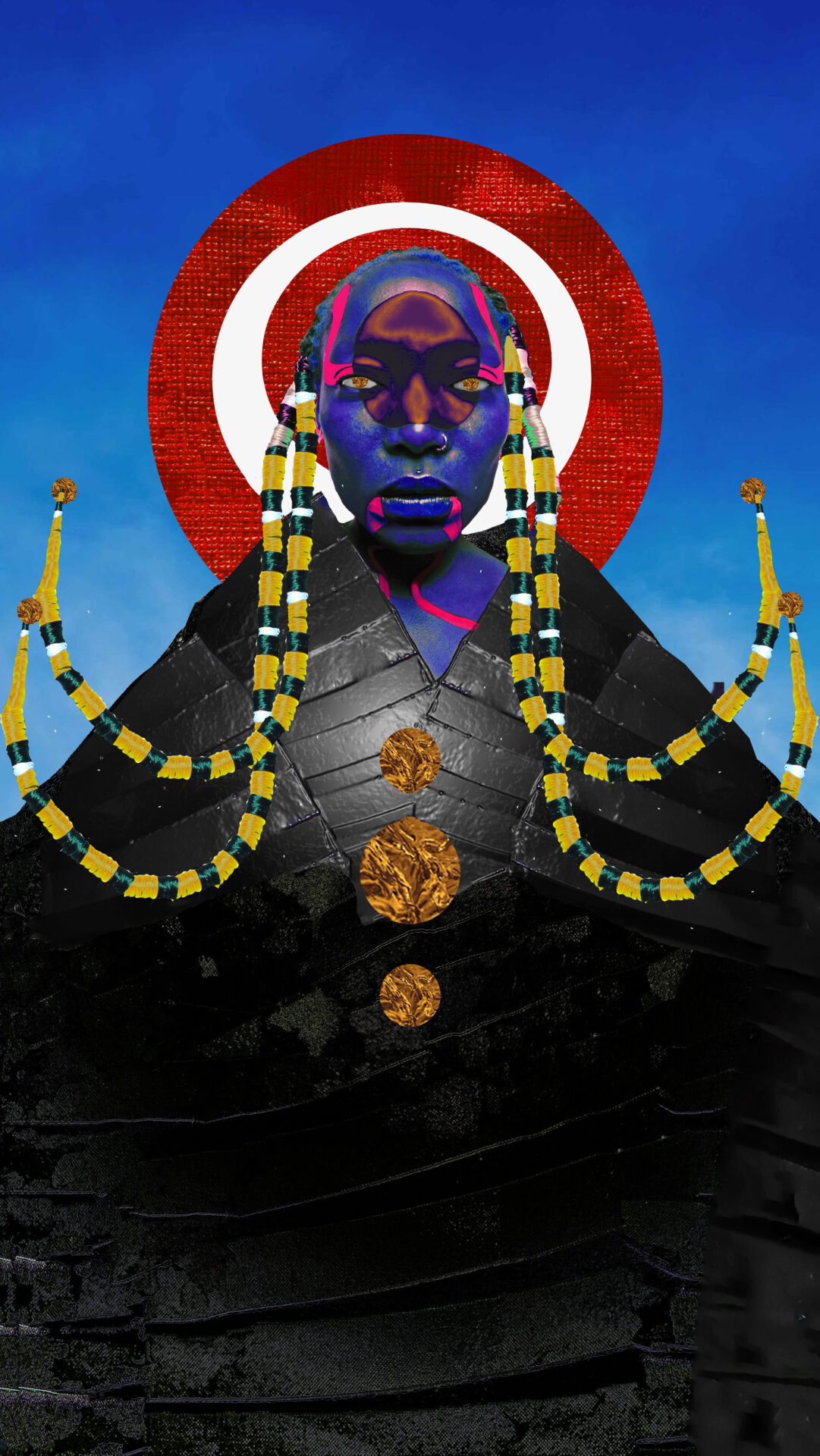
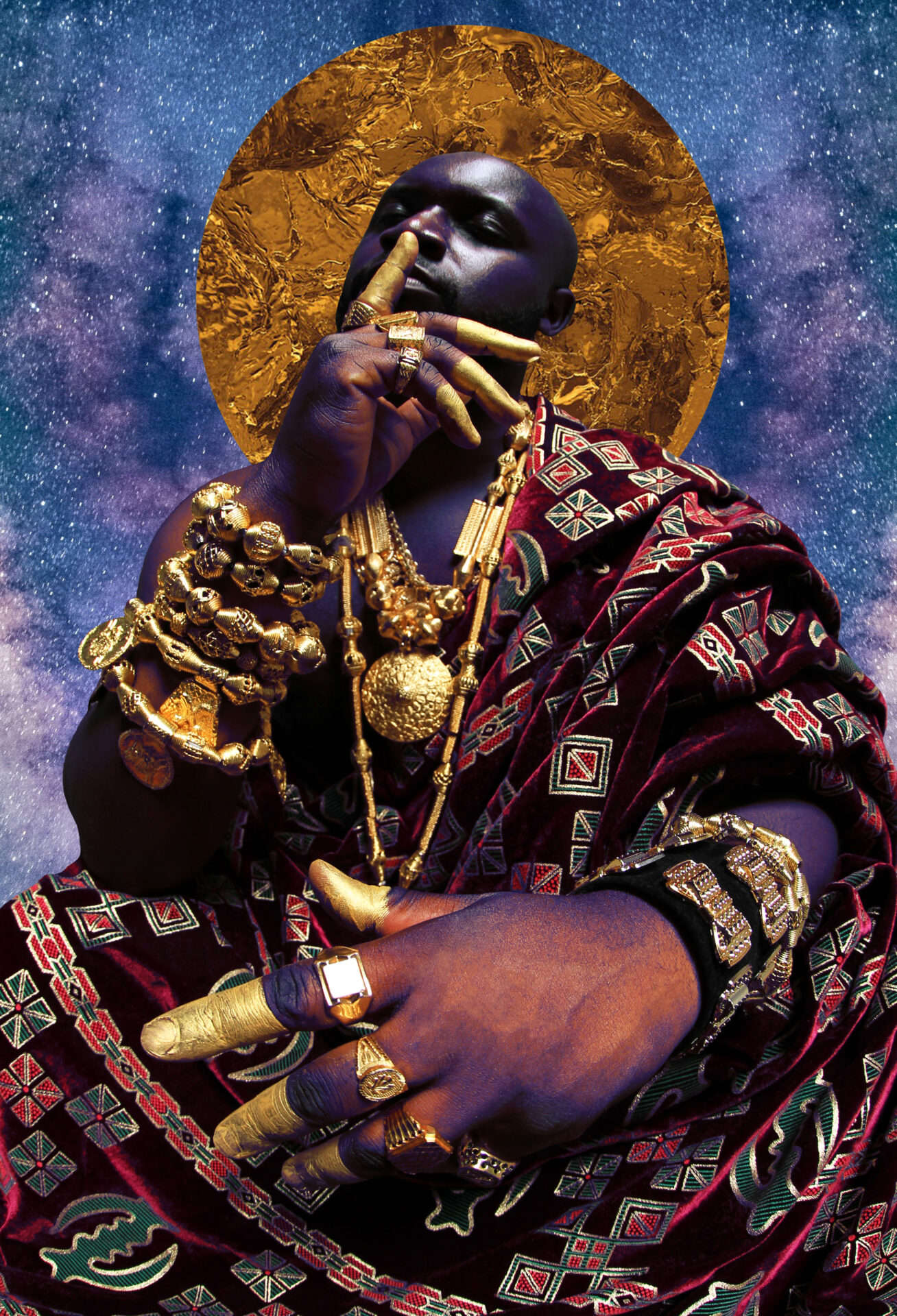
I wonder if AiRich has yet found space for all of the memories from the opening. I wonder what her next ten years will look like, where she will go and what kinds of knowledges will be unearthed for her then. So much of the substance of her work comes from the blending of opposites; past and future, the photograph and the painting, intensity and lightheartedness. AiRich herself is charming you can’t help but want to know more about her way of thinking. She finds aesthetic beauty and combines it with knowledge she’s gaining every day. Not a painter, not a standard photographer. Not straightforward, but different.
Indeed, she has arrived.
Afrofuturistic Visions is on since 27 January 2024 until 9 June 2024 at Stedelijk Museum Schiedam
Olivia Brown
is an artist and writer from New Orleans, LA, currently finishing her MA in Artistic Research at the UvA surrounding themes of cli-fi, Black bodies, and contamination


















